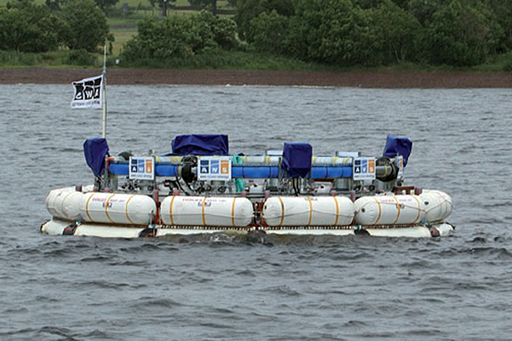3.4 Point absorbers: the AWS-III/Clam
Developed at Coventry University, the AWS-III/Clam (see Figure 7.18). consists of twelve interconnected air chambers, or cells, arranged around the circumference of a toroid, with Wells turbines in each cell. At full scale this would be 60 m or so in diameter, deployed in deep water (40–100 m). Each cell is sealed against the sea by a flexible reinforced rubber diaphragm.
Waves cause the movement of air between cells. Air, pushed from one cell by the incident wave, passes through at least one of the twelve Wells turbines on its way to fill other cells. As the air system is sealed, this flow of air will be reversed as the positions of wave crest and trough on the circle change. The important points about AWS-III are its omni-directional energy absorption and the highly sensitive diaphragms that accept energy from the surge motion of the waves. As pointed out earlier, the surge component of waves can be twice as energetic as the heave.
Now you’ll look at attenuator devices.

